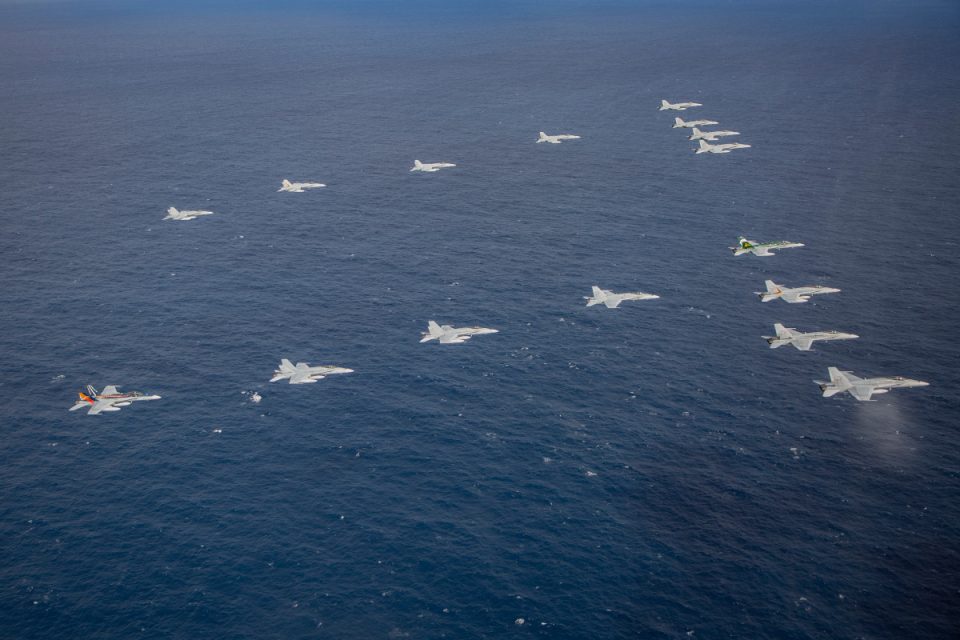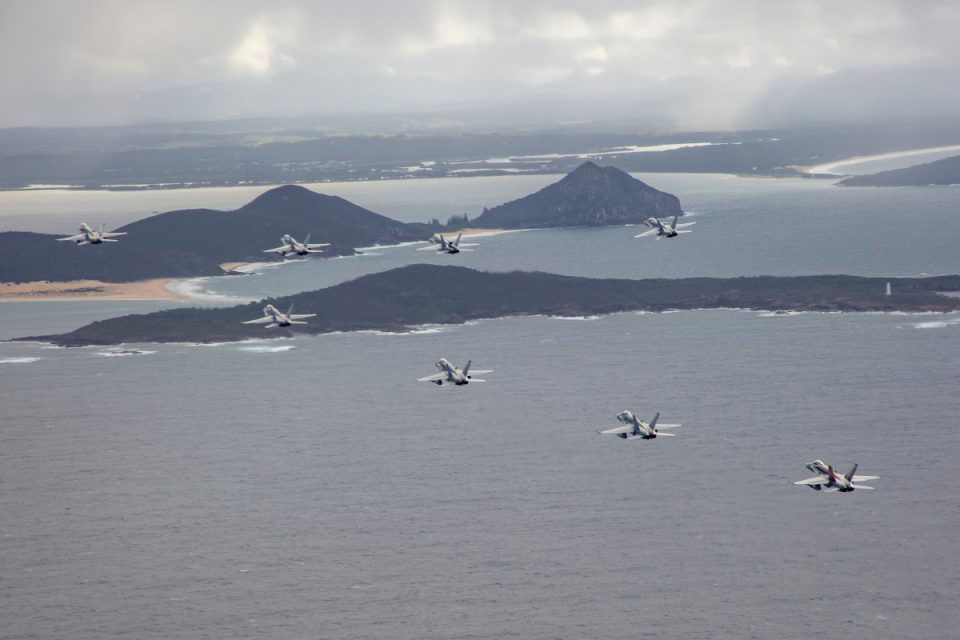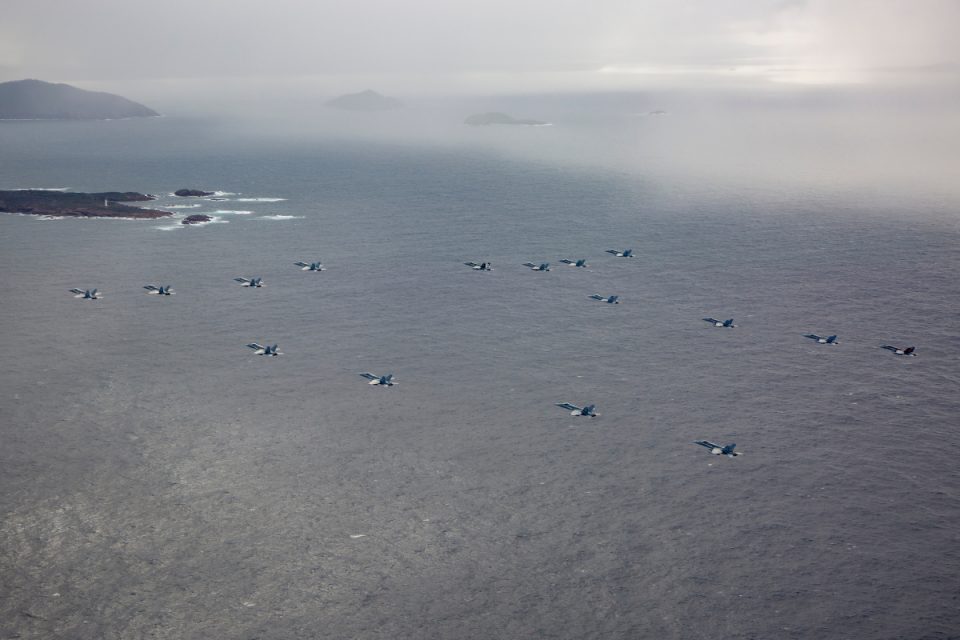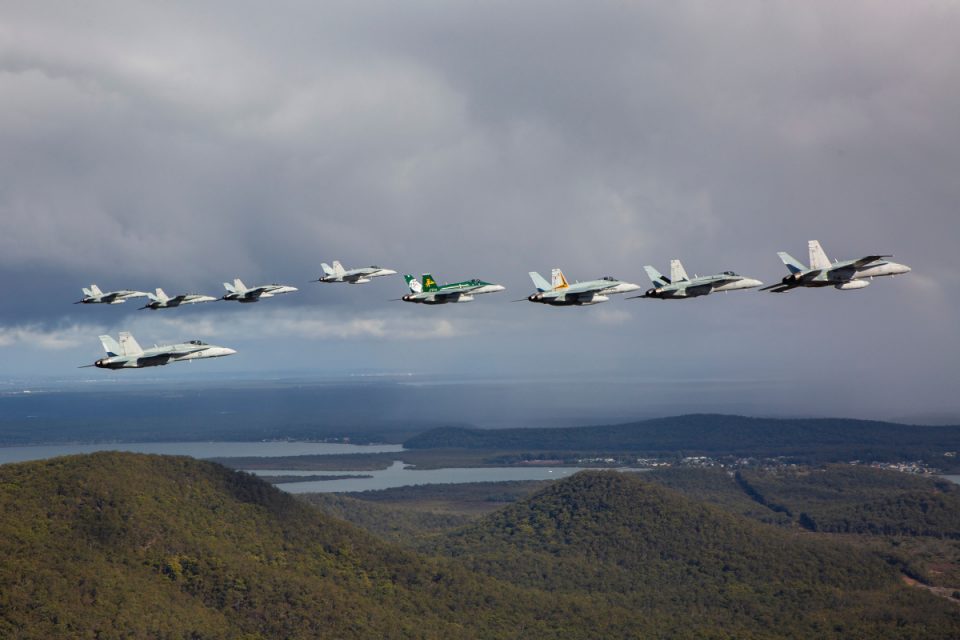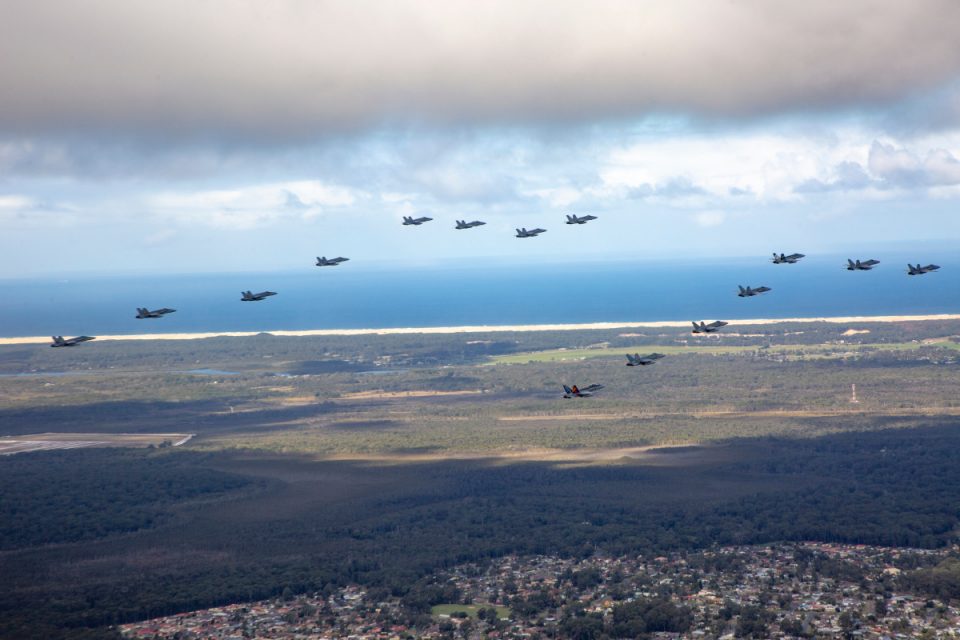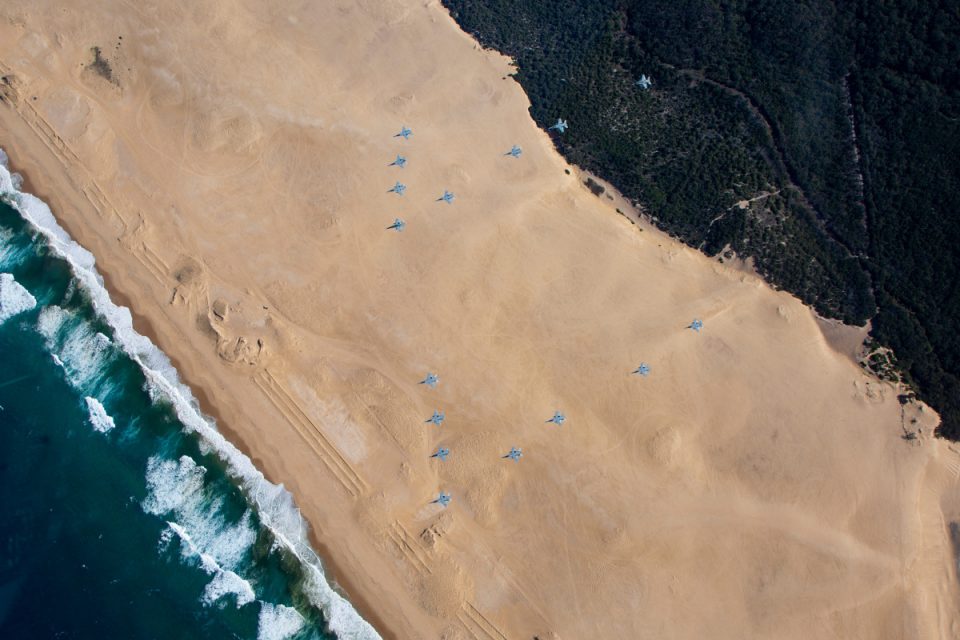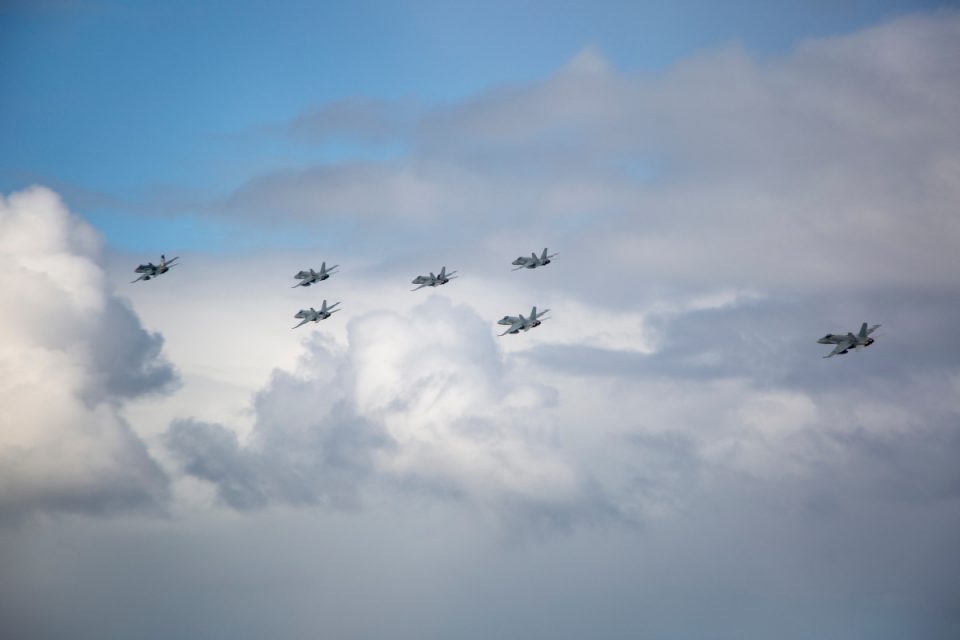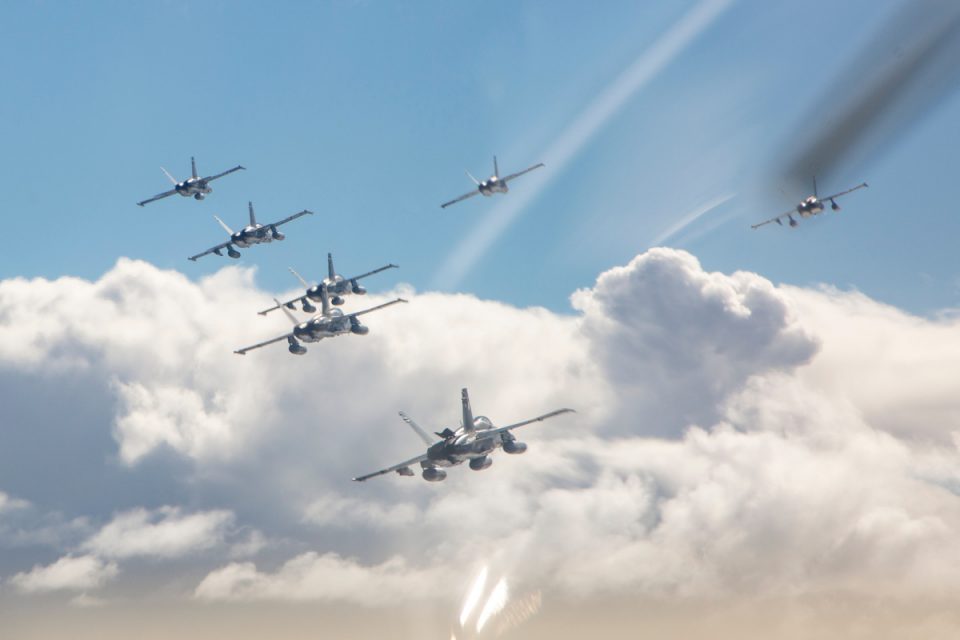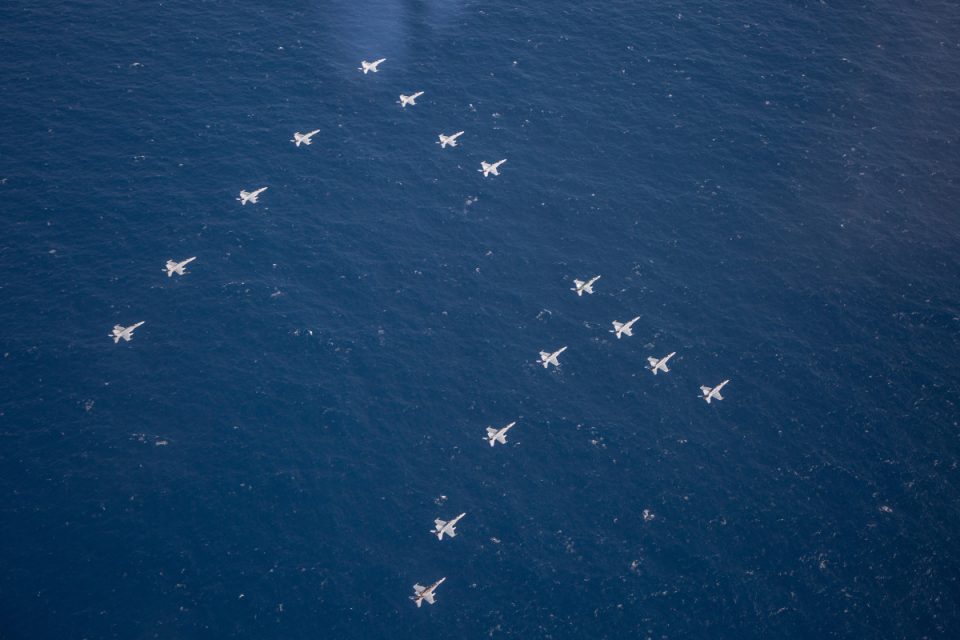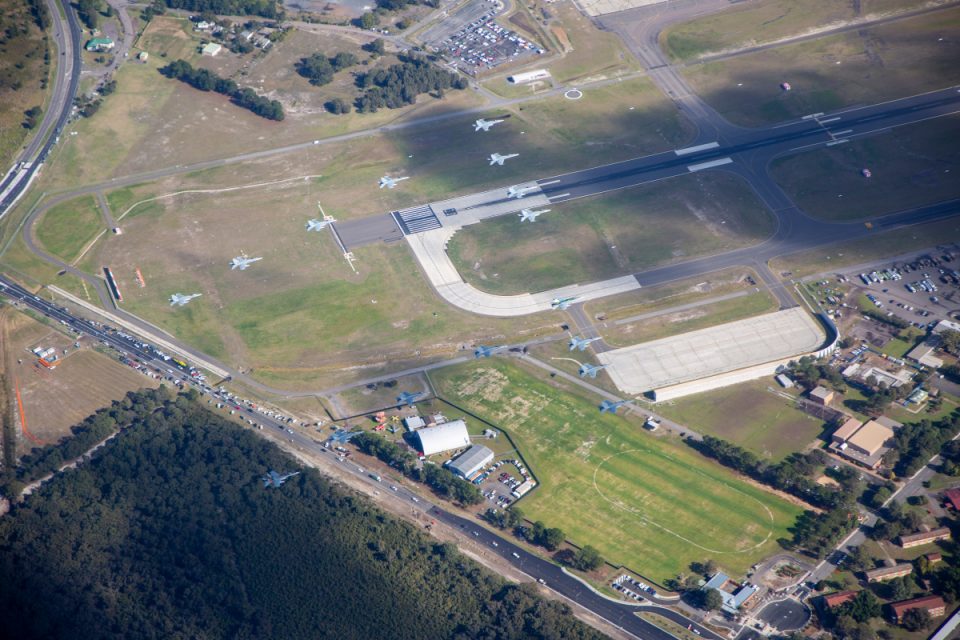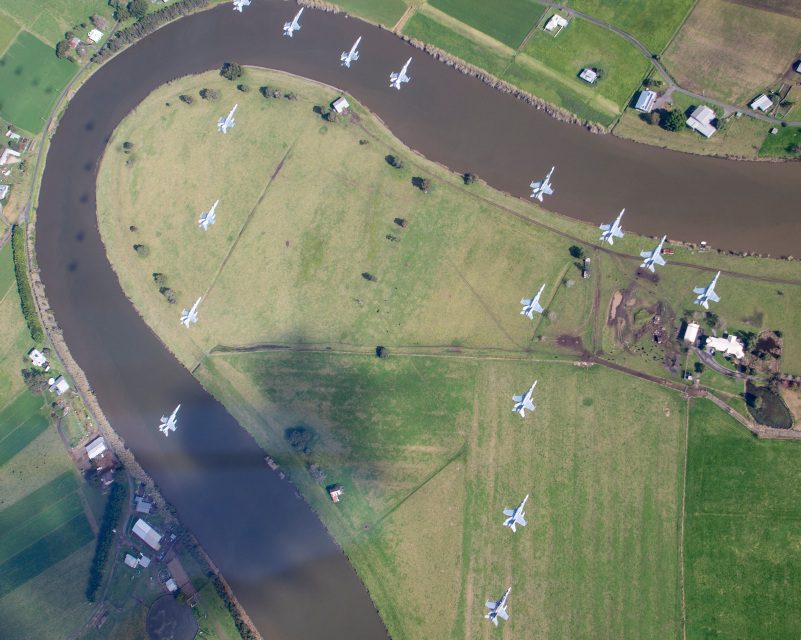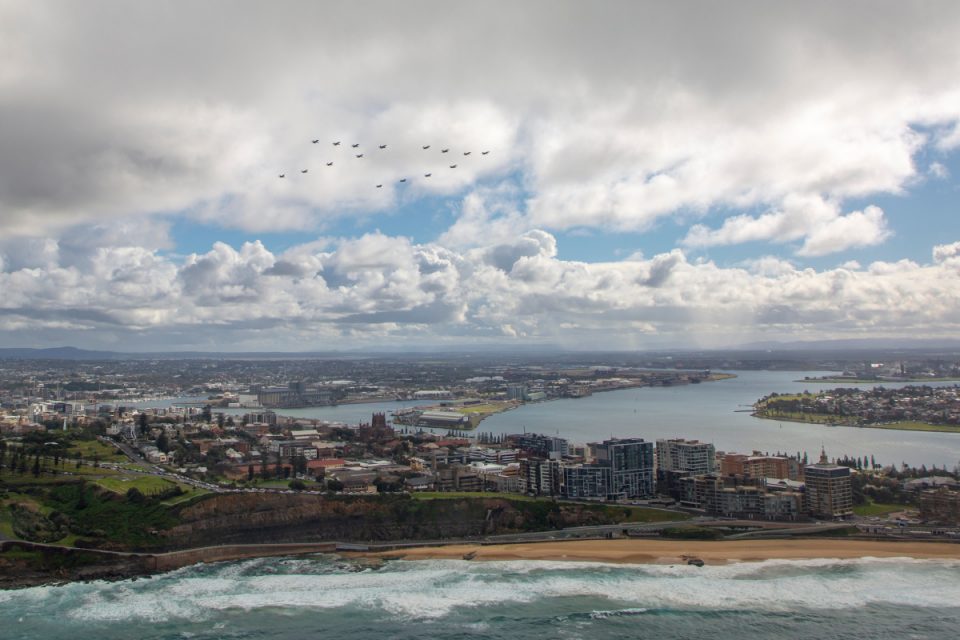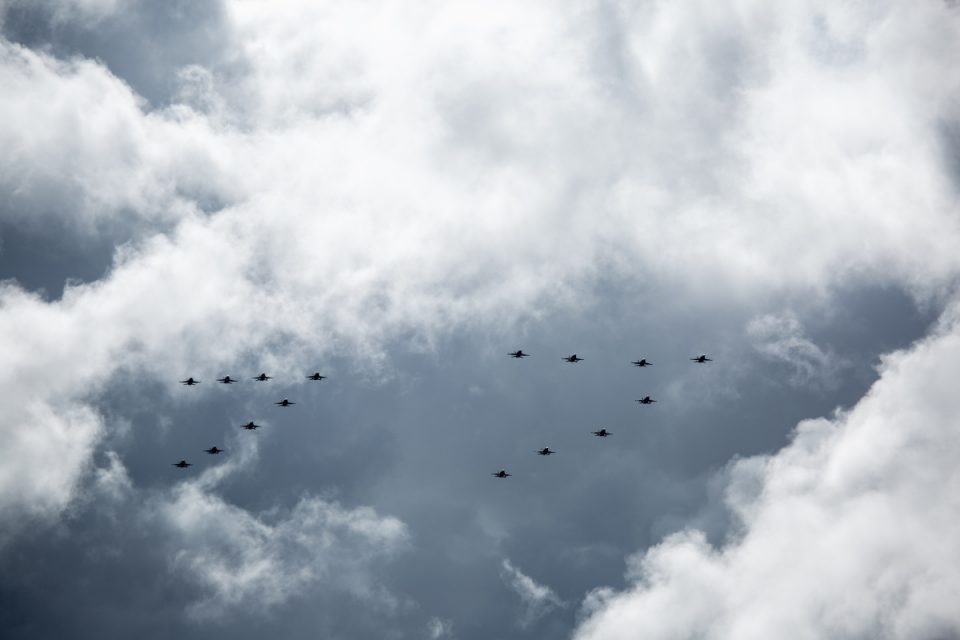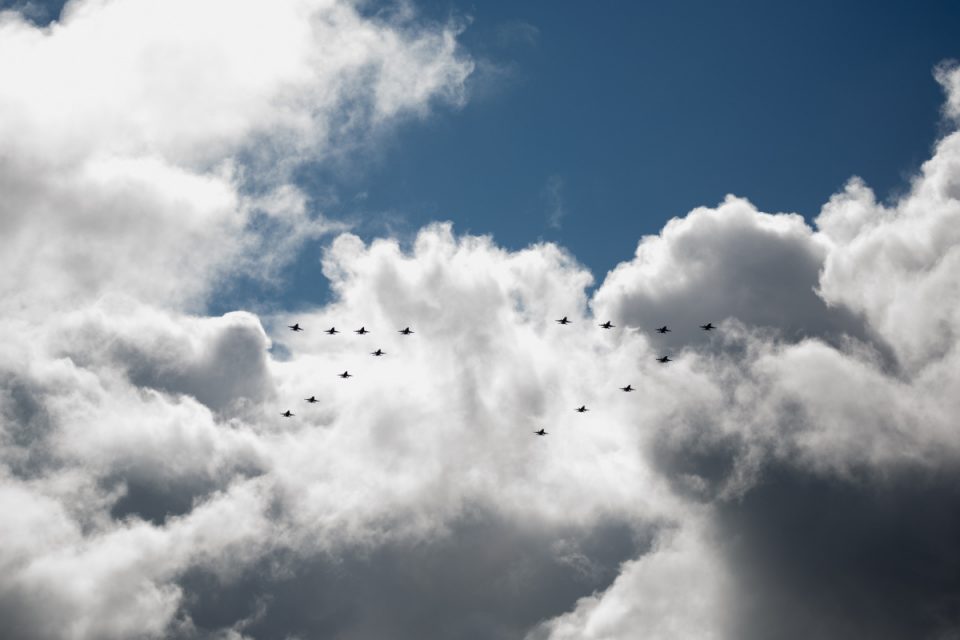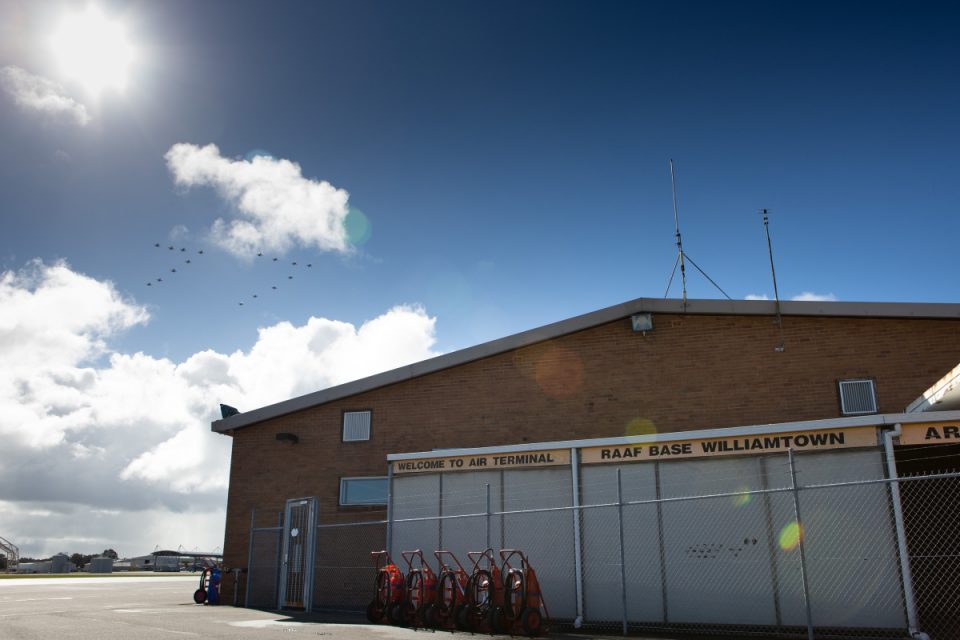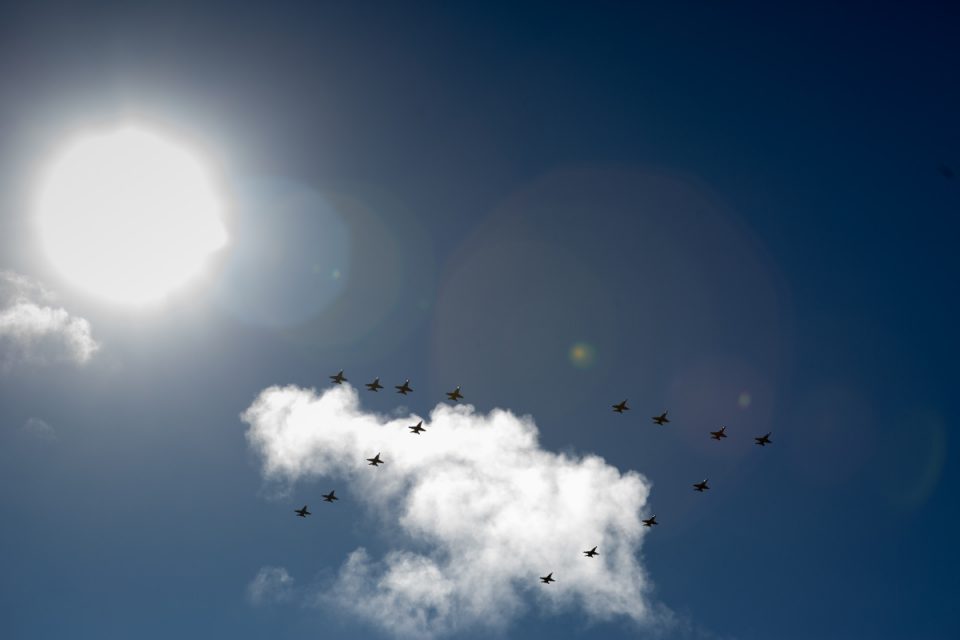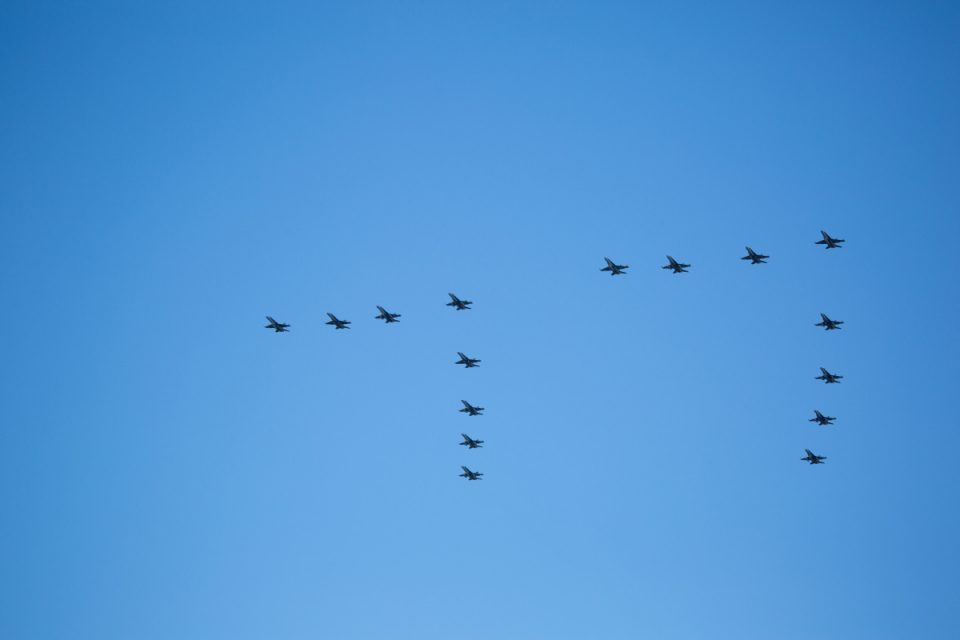The Royal Australian Air Force’s Number 77 Squadron conducted a flypast over RAAF Base Williamtown on July 5, 2019 in a ‘double seven’ formation to mark the unit’s 77 years of operations.
The flypast took the 16 F/A-18A Hornets over RAAF Williamtown and well as the Lower Hunter and Port Stephens Council regions.
The aircraft departed the base around 11am and conducted the formation over Nelson Bay, Medowie, Raymond Terrace and Newcastle between 11.20 and 11.40am before returning to base at approximately 11.45am.
Commanding Officer 77 Squadron Wing Commander Jason Easthope said the flying activities played an important role in acknowledging the unit’s proud history, upholding its rich legacy and honouring the sacrifices the squadron has made.
“77SQN is a front-line operational fighter squadron that has supported campaigns in the South Pacific, Korea, Malaysia and most recently in Iraq,” Wing Commander Easthope said.
“We are also nearing the end of an era, where in 18 months, 77 Squadron will cease Hornet operations and transition to the F-35A Joint Strike Fighter.
“The Hornet has served Australia well over the years and this commemorative flypast is also part of acknowledging that.”
Wing Commander Easthope thanked the local community for their ongoing support.
The ‘double seven’ formation was also flown in 1955 using the Gloster Meteor aircraft when the Squadron conducted a return-to-Australia tour at the end of the Korean War.
According to Wikipedia:
No. 77 Squadron is a Royal Australian Air Force(RAAF) squadron headquartered at RAAF Base Williamtown, New South Wales. It is controlled by No. 81 Wing, and equipped with McDonnell Douglas F/A-18 Hornetmulti-role fighters.
The squadron was formed at RAAF Station Pearce, Western Australia, in March 1942 and saw action in the South West Pacific theatre of World War II, operating Curtis P-40 Kittyhawks. After the war, it re-equipped with North American P-51 Mustangsand deployed to Japan as part of the British Commonwealth Occupation Force.
The squadron was about to return to Australia when the Korean Warbroke out in June 1950, after which it joined United Nationsforces supporting South Korea. It converted from Mustangs to Gloster Meteorjets between April and July 1951 and remained in Korea until October 1954, claiming five MiG-15sand over five thousand buildings and vehicles destroyed during the war for the loss of almost sixty aircraft, mainly to ground fire.
The squadron re-equipped with CAC Sabresat Williamtown in November 1956. Two years later it transferred to RAAF Butterworthin Malayato join the air campaign against communist guerrillas in the last stages of theEmergency.
The squadron remained at Butterworth during the 1960s, providing regional air defence during the Konfrontasibetween Indonesia and Malaysia. It returned to Williamtown in early 1969 to re-equip with Dassault Mirage IIIsupersonic jet fighters. No. 77 Squadron began converting to Hornets in June 1987.
It supplied a detachment of four aircraft to the American base on Diego Garciain 2001–02, supporting the war in Afghanistan, and deployed to the Middle East as part of the military intervention against ISILin 2015–16.
Along with its Hornets, the squadron briefly operated Pilatus PC-9sin the forward air controlrole in the early 2000s.
The RAAF plans to replace its Hornets with Lockheed Martin F-35 Lightning IIfighters commencing in 2018, and No. 77 Squadron is scheduled to convert to the new type in 2021.



